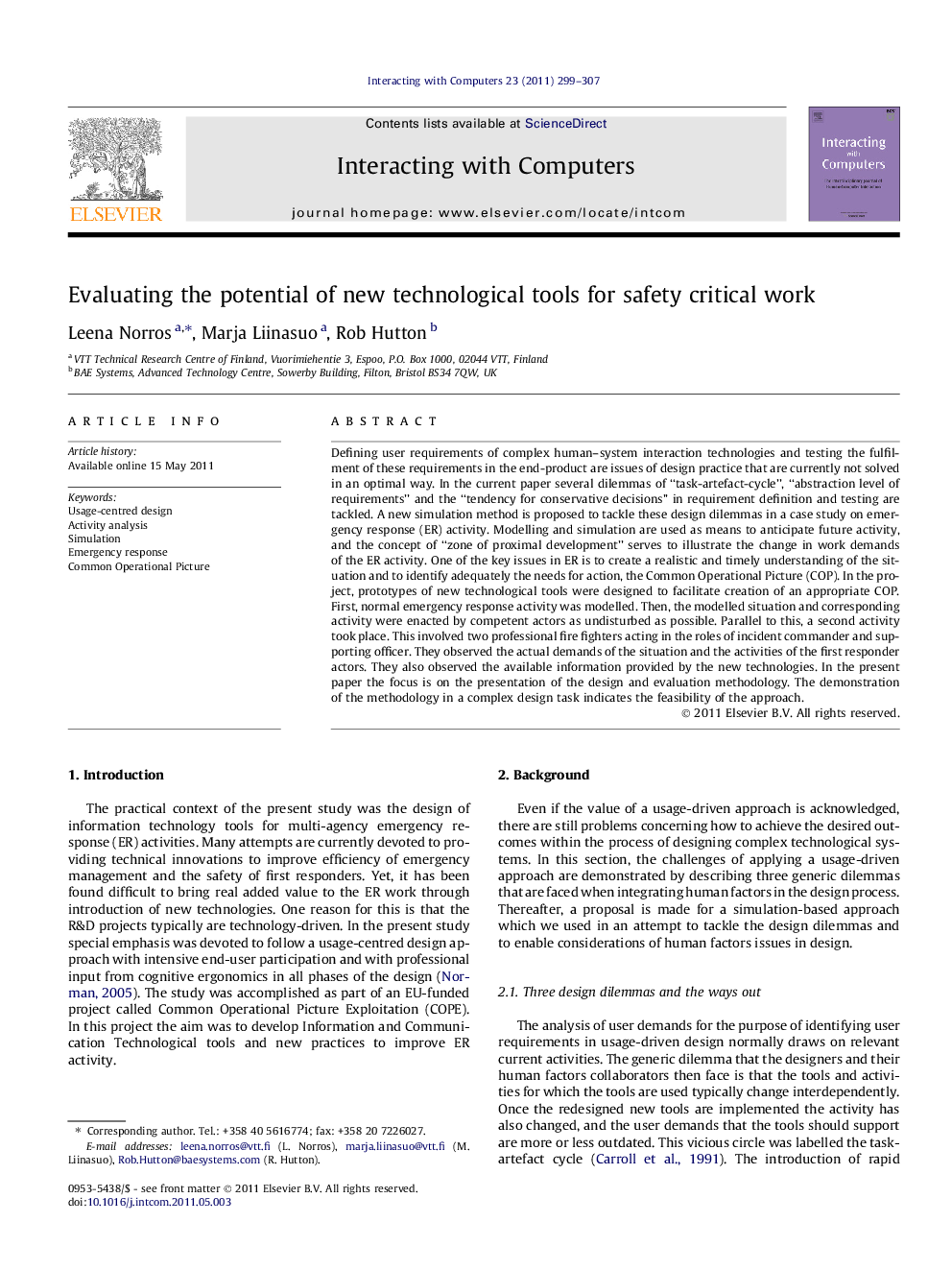| کد مقاله | کد نشریه | سال انتشار | مقاله انگلیسی | نسخه تمام متن |
|---|---|---|---|---|
| 551743 | 873094 | 2011 | 9 صفحه PDF | دانلود رایگان |

Defining user requirements of complex human–system interaction technologies and testing the fulfilment of these requirements in the end-product are issues of design practice that are currently not solved in an optimal way. In the current paper several dilemmas of “task-artefact-cycle”, “abstraction level of requirements” and the “tendency for conservative decisions” in requirement definition and testing are tackled. A new simulation method is proposed to tackle these design dilemmas in a case study on emergency response (ER) activity. Modelling and simulation are used as means to anticipate future activity, and the concept of “zone of proximal development” serves to illustrate the change in work demands of the ER activity. One of the key issues in ER is to create a realistic and timely understanding of the situation and to identify adequately the needs for action, the Common Operational Picture (COP). In the project, prototypes of new technological tools were designed to facilitate creation of an appropriate COP. First, normal emergency response activity was modelled. Then, the modelled situation and corresponding activity were enacted by competent actors as undisturbed as possible. Parallel to this, a second activity took place. This involved two professional fire fighters acting in the roles of incident commander and supporting officer. They observed the actual demands of the situation and the activities of the first responder actors. They also observed the available information provided by the new technologies. In the present paper the focus is on the presentation of the design and evaluation methodology. The demonstration of the methodology in a complex design task indicates the feasibility of the approach.
► The task-artefact cycle is tackled by a new type of simulation method.
► User requirements are elicited at a manageable abstraction level.
► Promisingness of new technology is evaluated in a real-life usage context.
Journal: Interacting with Computers - Volume 23, Issue 4, July 2011, Pages 299–307